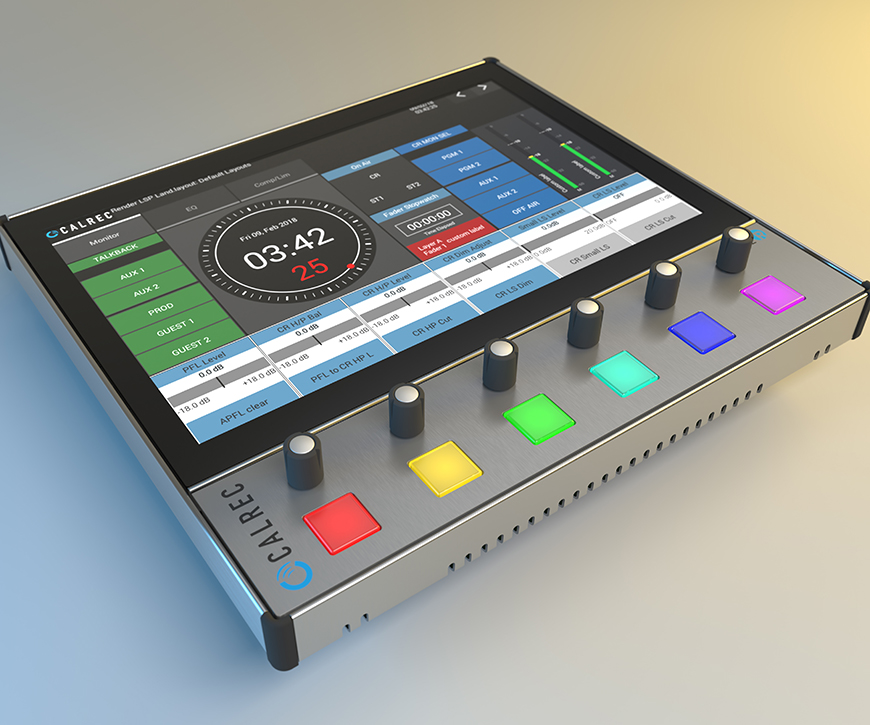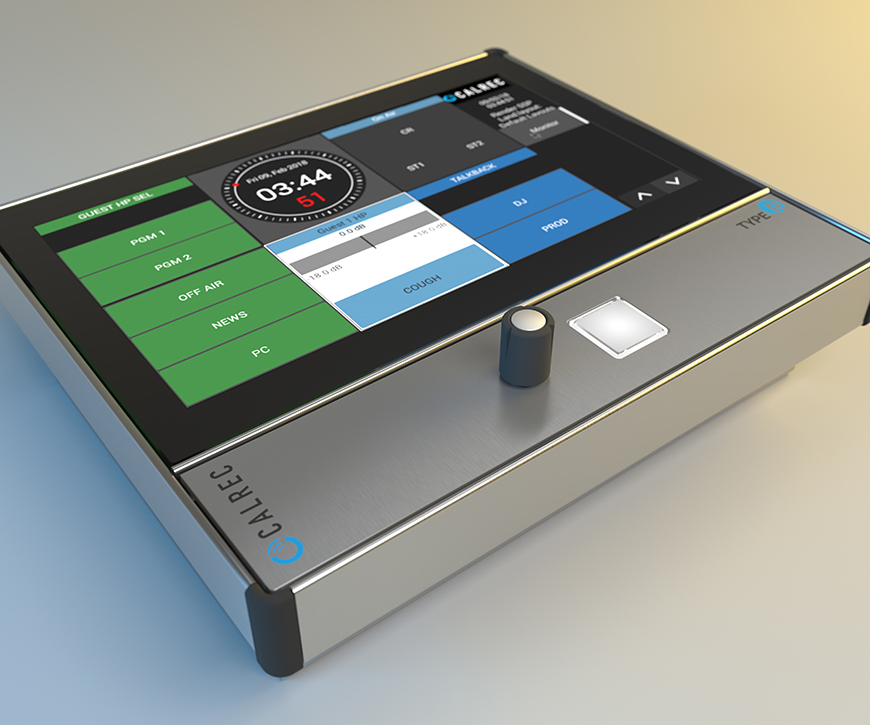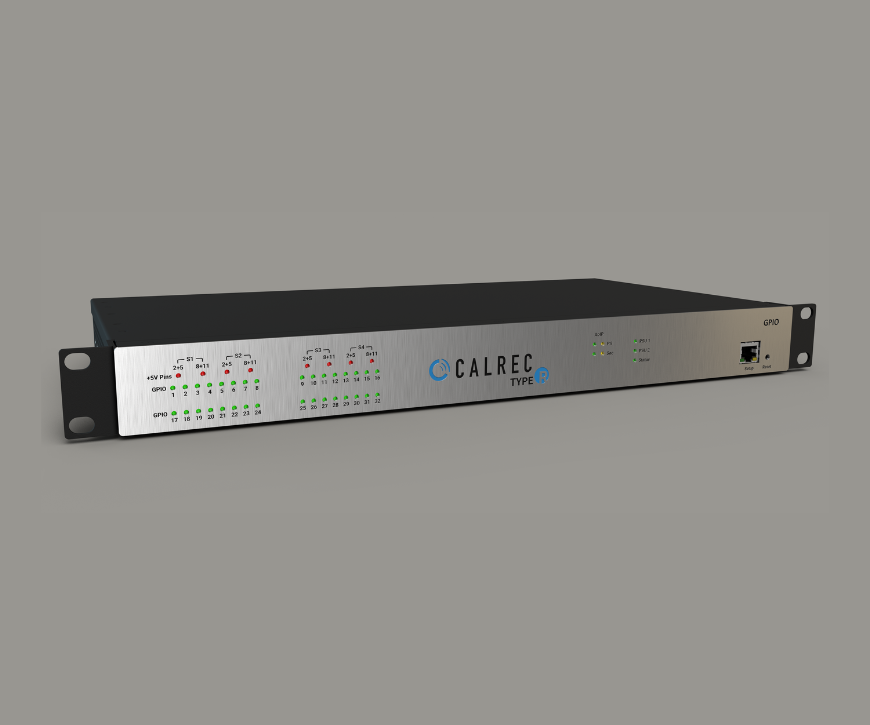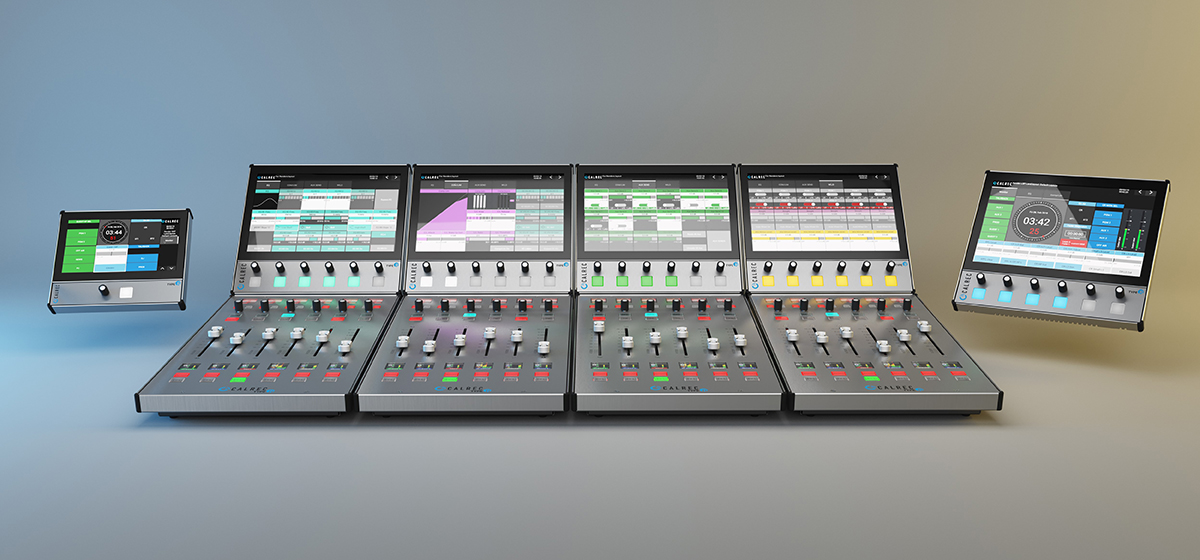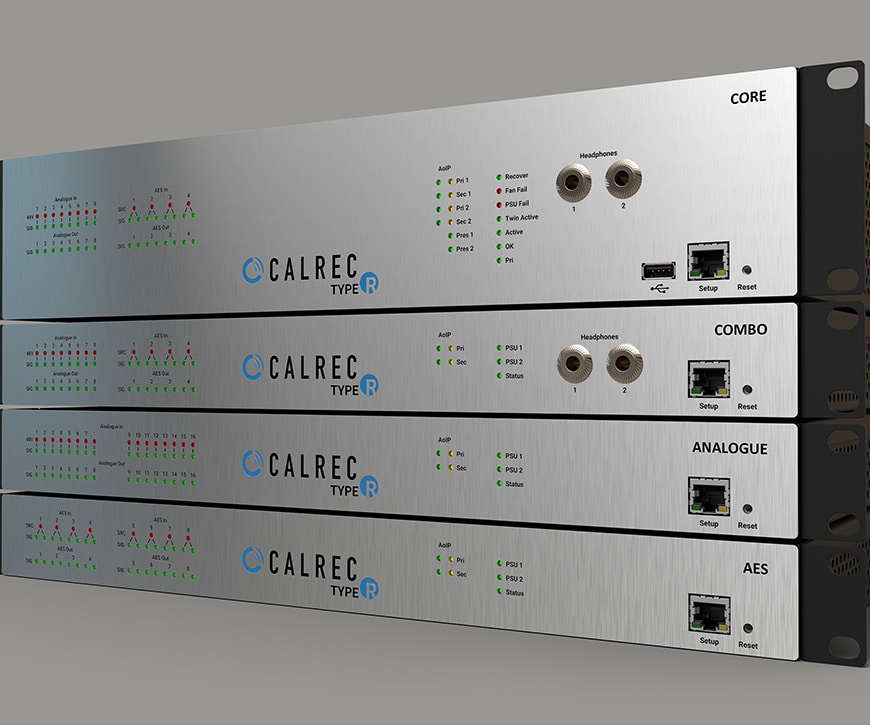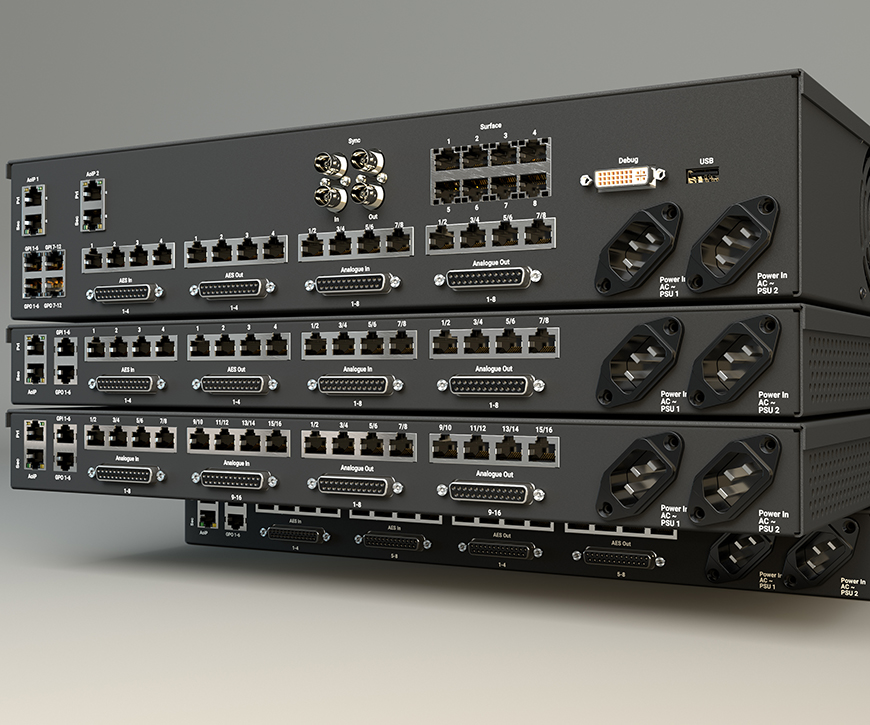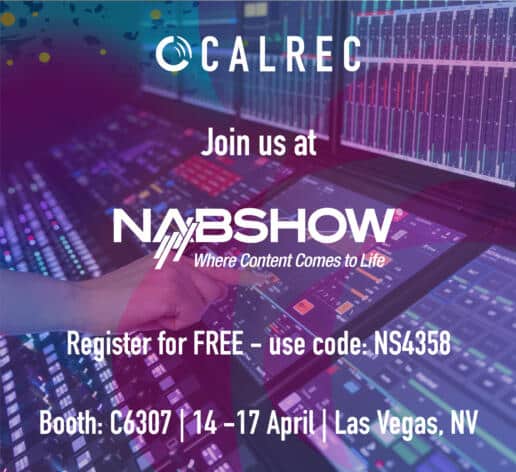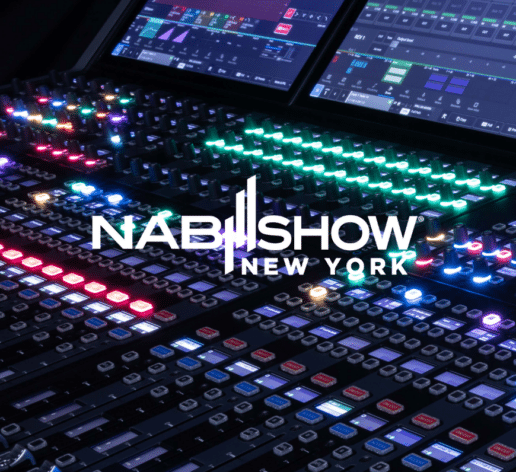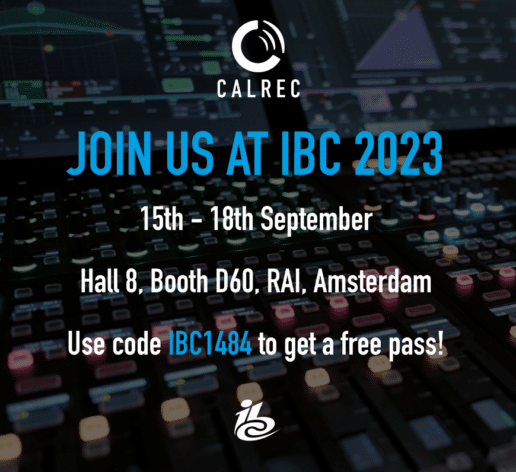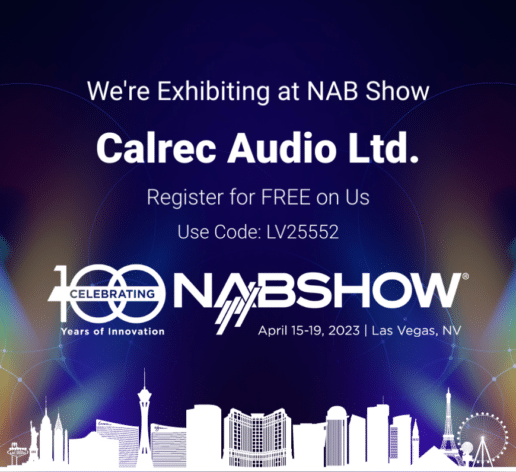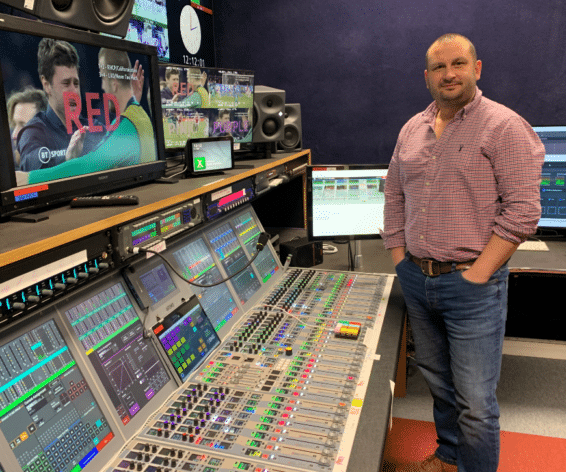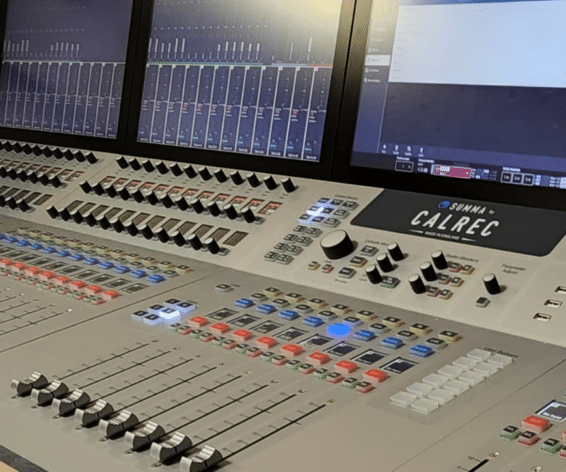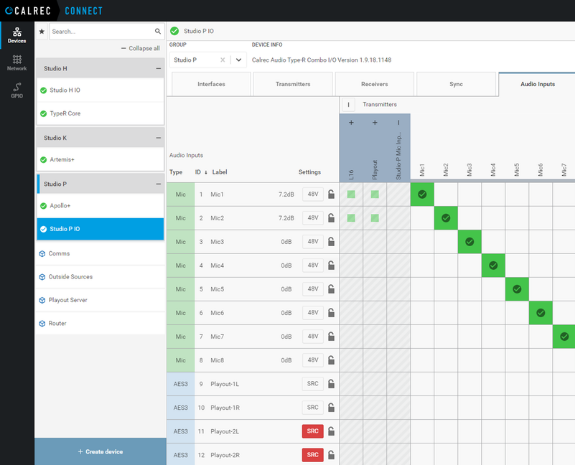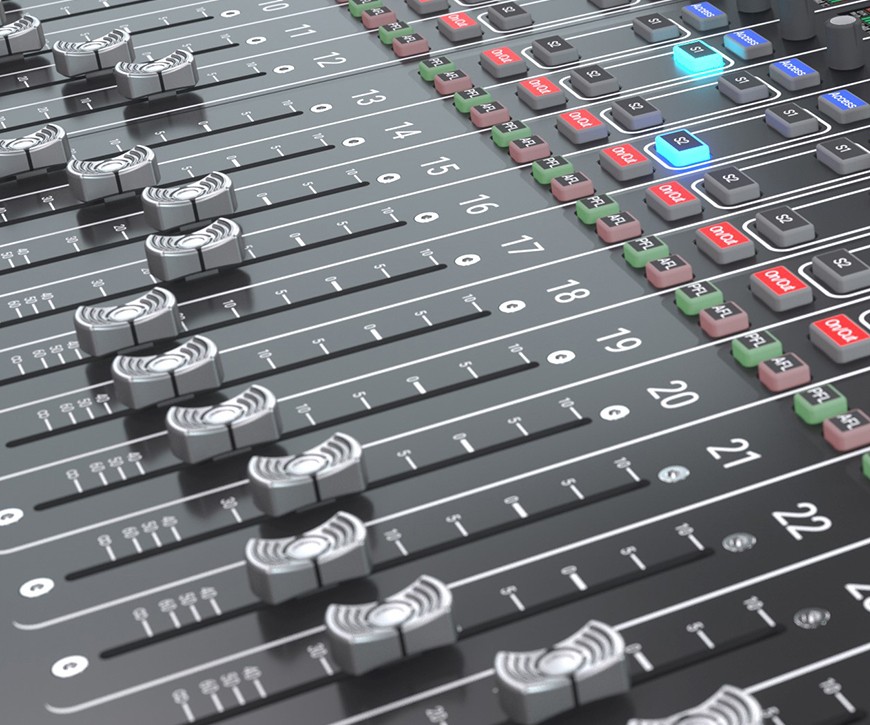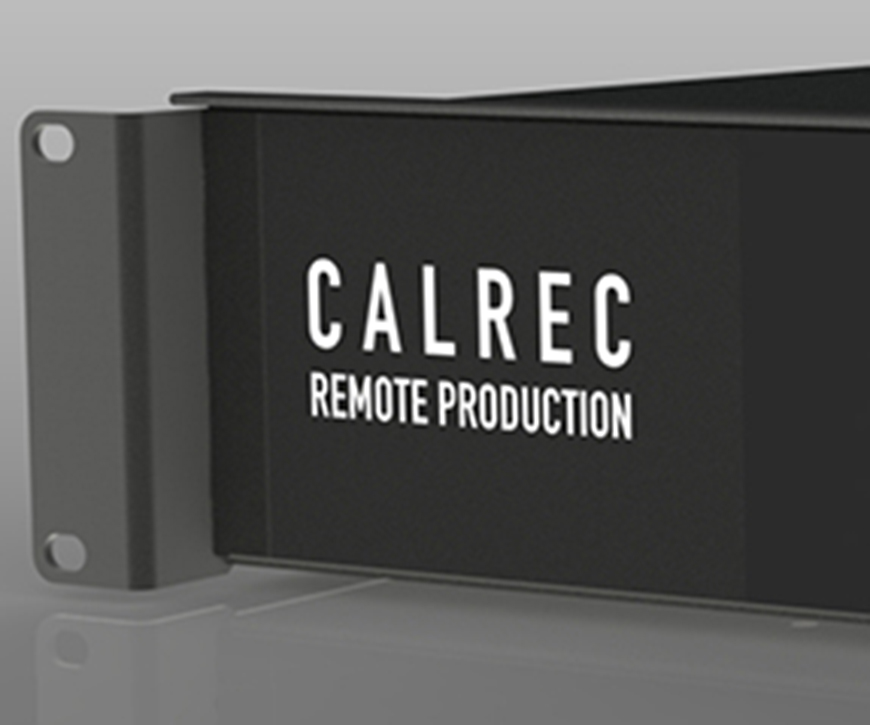
-
The building blocks for your station
Benefits
A modular, expandable, IP-based mixing system, Type R uses standard networking hardware and soft panels which can be tailored to operator needs. Its three hardware panels, can create a variety of system types; it ties in with Calrec Assist for mixing in the cloud; and it provides mix facilities for up to three independent mixers to hang off one system core.
Why you need a Type R for TV
Type R’s flexible, fully 5.1 capable IP core enables broadcasters to benefit from virtual working practices and automated broadcast workflows on a cost-effective SMPTE 2110-compliant IP backbone. Type R provides fully automated programming with real-time adjustment of unpredictable external factors, either via the web or via highly portable dedicated hardware elements.
-
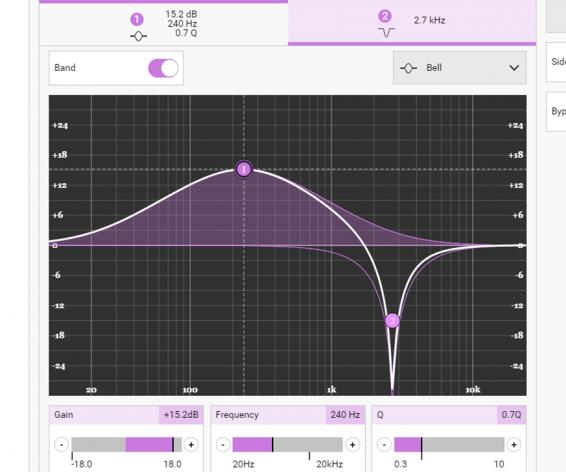
Flexible working
Type R makes it easy to get hands on via the Calrec Assist web UI. If preferred, physical banks of faders can be added as well as adaptable soft panels which can be configured on the fly to meet changing requirements.
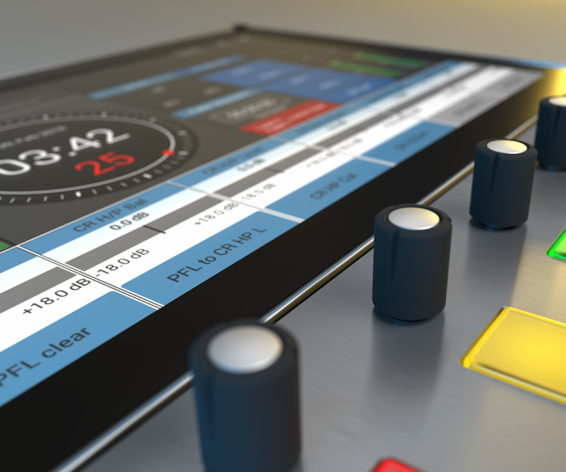
Inclusive
Automated broadcast environments provide significant Capex returns. Type R quickly connects with station automation systems, while operators can still tweak settings, such as adding dynamics to a mic input, via dedicated soft panels or via the Assist web UI.
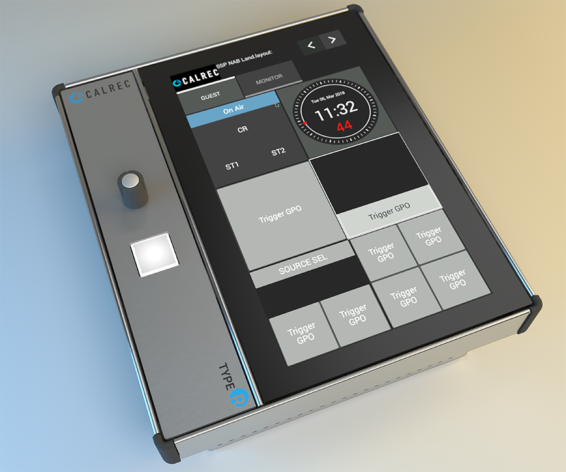
Expandable
Type R is an easy choice for broadcasters looking to invest in a full IP infrastructure with one eye on future development. Its range of DSP options can be changed as required and upgraded on the fly, while new panels can be quickly added by plugging in over POE.
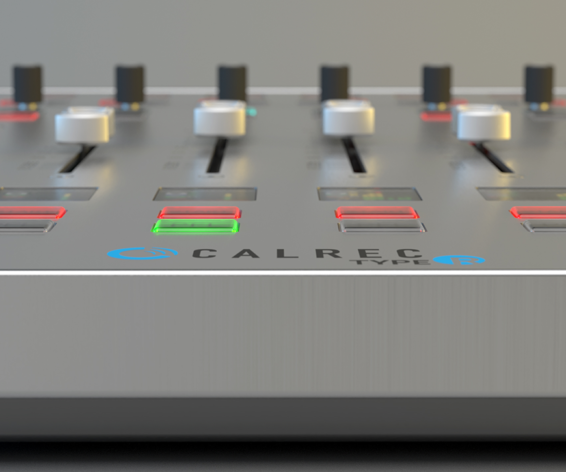
Configurable
Physical user controls consist of just three slimline panels: a fader panel, a large soft panel and a small soft panel. Touch-screen soft panels have colourful control elements; they can be customised as multi-function panels and changed on the fly.
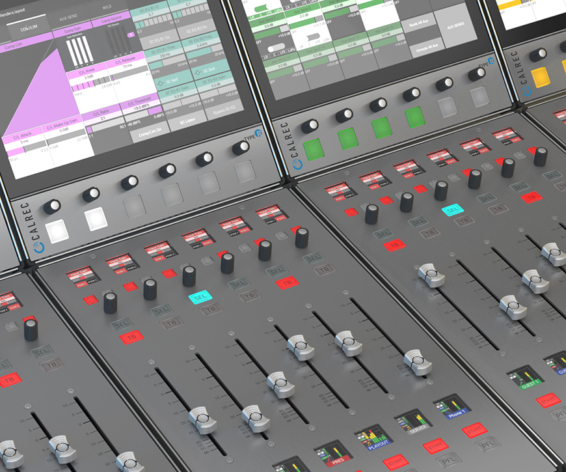
Powerful
Type R’s range of DSP packs allow up to 3 x DSP mix engines to run independently on a single core at the same time. These can be remote from the core, creating a cost-effective option for broadcasters with multiple control rooms and for remote working.
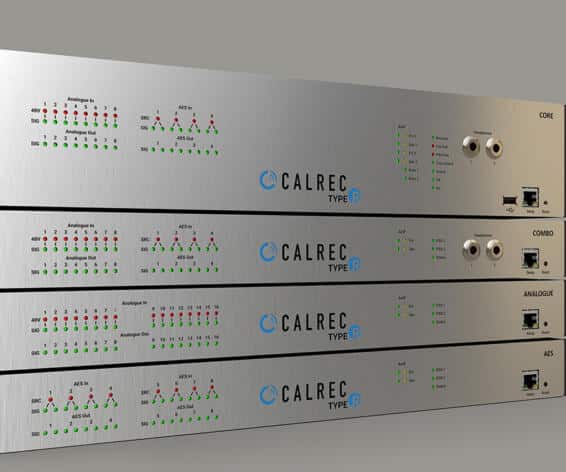
Licenced
Type R has support for NMOS discovery and connection management (IS-04 v1.3 and IS-05: v1.1) and is SMPTE 2110 compliant, and has a range of licensed DSP options.
-
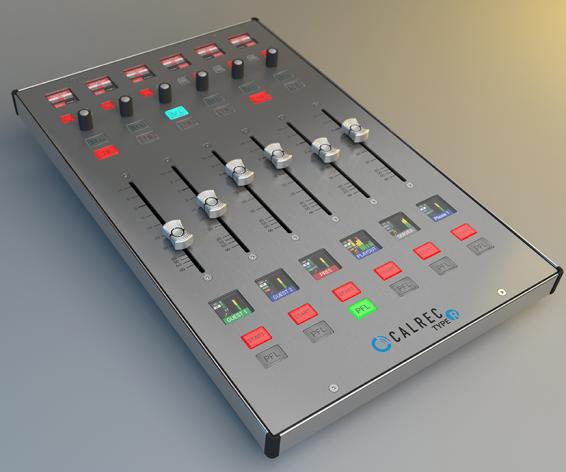
Type R Fader Panel
Fader panels are small, sleek and simple, with six faders and immediate access to essential controls. Fader panels can be added or removed as simply as plugging or unplugging an Ethernet cable, creating a radio infrastructure that is easily expandable, and making upgrades quick and simple.
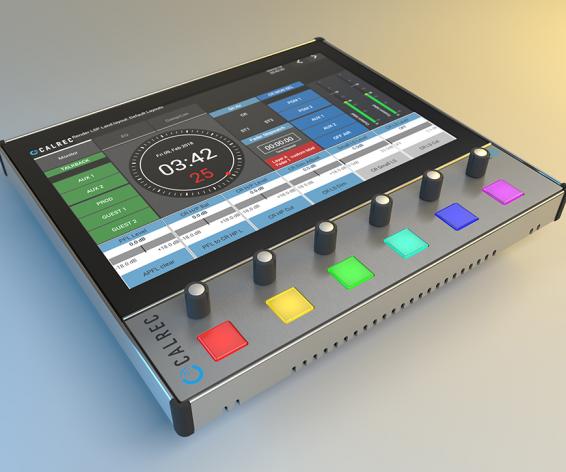
Type R LSP
Type R touch-screen soft panels are designed around simple and colourful control elements and can easily be customised as multi-function panels. This functionality can be quickly changed from show-to-show using simple memory loads and can be tailored to fit the needs of the talent.
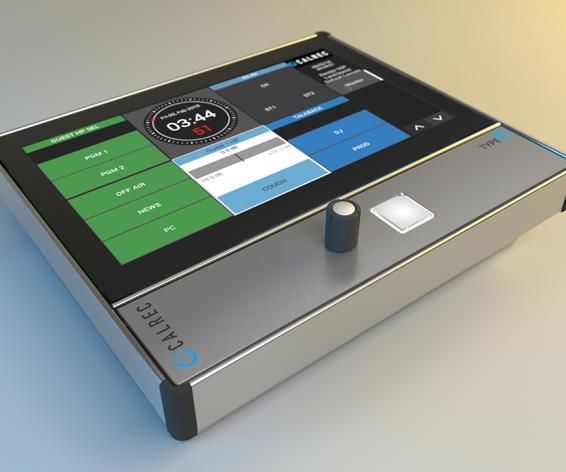
Type R Fader SSP
Soft panels can be utilised in either landscape or portrait formats and used to provide adaptable and specific functionality for talent, while ensuring overall control is maintained by the station technical team. Both LSP and SSP panels can be added with a single Ethernet connection.
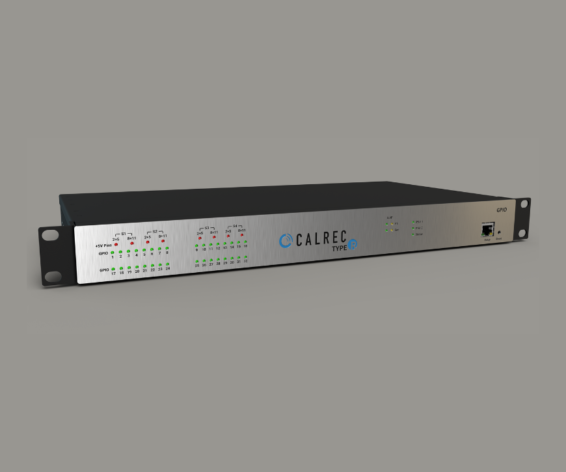
Type R GPIO Unit
Calrec’s GPIO unit for Type R is a 1U box which delivers an additional 32 x GPOs and 32 GPIs for interfacing with external systems such as playout, phone systems, codecs etc. Functionality can be added onto physical buttons on Type R fader panels, soft panels or web UIs, and configured via Calrec’s user-friendly Connect application.
-
Product Info 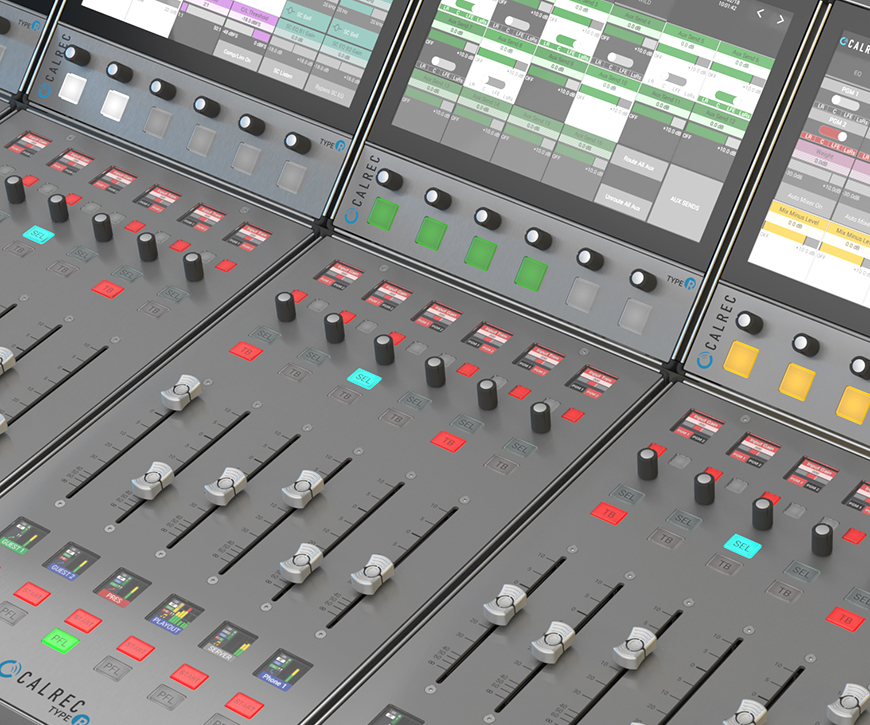
Type R R120
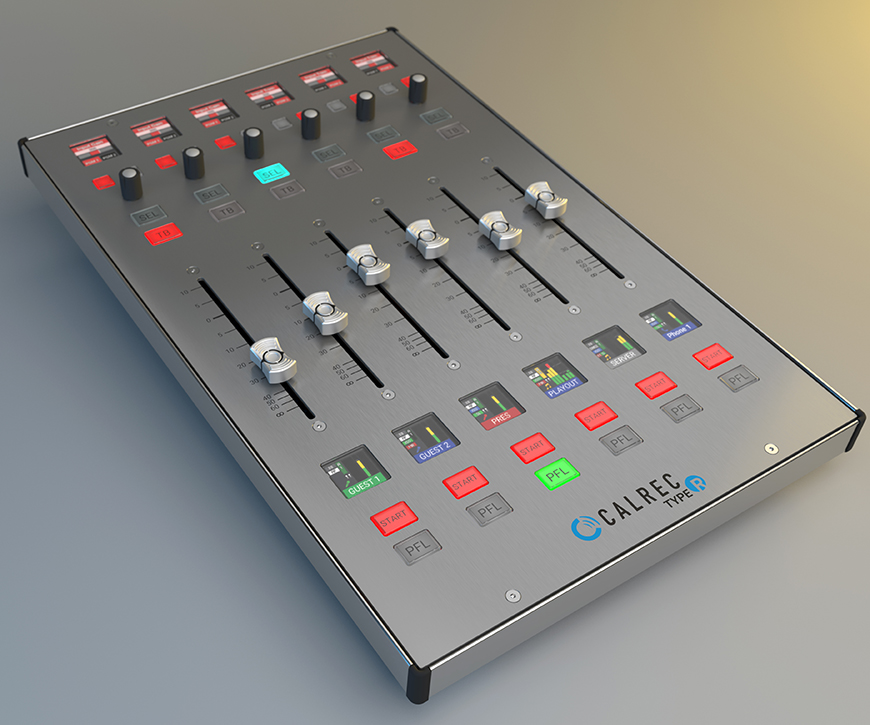
Type R R80
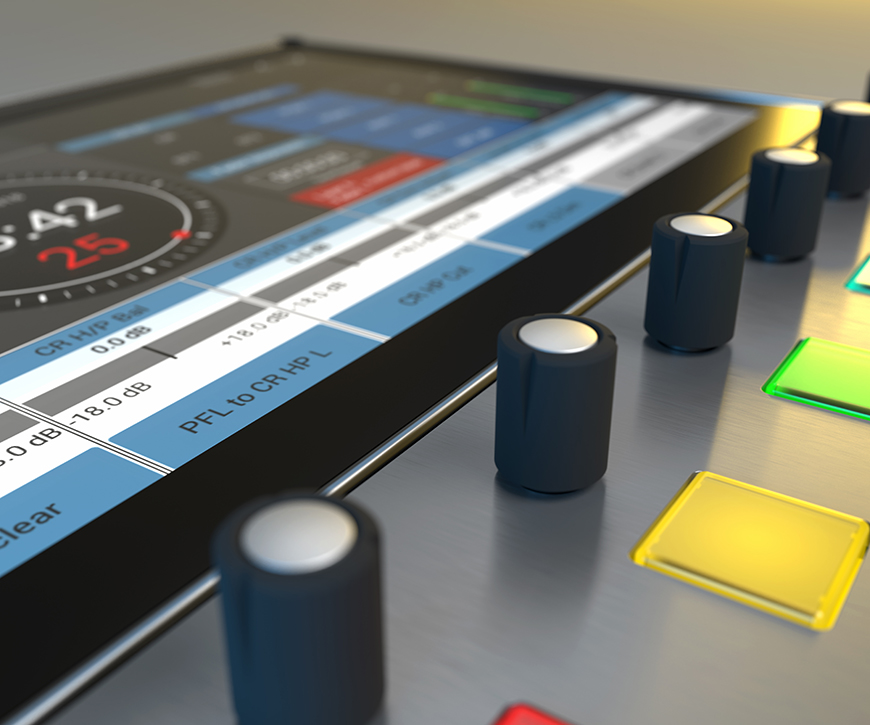
Type R R40

Type R R20
Physical Faders 48 per surface 48 per surface 48 per surface 48 per surface DSP Processing Paths 166 126 78 42 Input Channels 120 80 40 20 Main and Group Buses 30 30 22 14 Main Outputs 3 3 3 3 Group Outputs 8 8 8 8 Track/IFB Output Buses N/A N/A N/A N/A Track/IFB Sends per Path N/A N/A N/A N/A Aux Output Buses 16 16 16 8 Mix-Minus Outputs and Direct Outputs 96 64 32 24 Input Delay 64 of up to 5.4s 44 of up to 5.4s 20 of up to 5.4s 16 of up to 5.4s Insert Send and Returns 96 64 32 24 Path Delay 64 of up to 5.4s 44 of up to 5.4s 20 of up to 5.4s 16 of up to 5.4s Output Delay 64 of up to 5.4s 44 of up to 5.4s 20 of up to 5.4s 16 of up to 5.4s -
Fader Panel
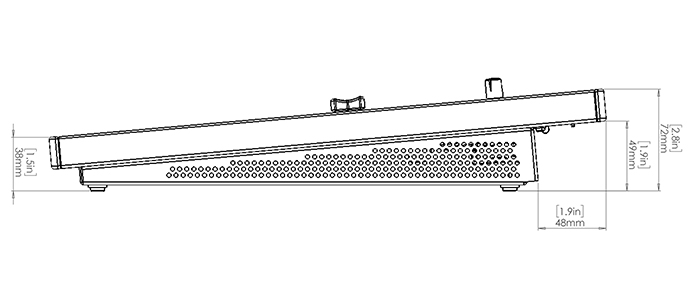

LSP

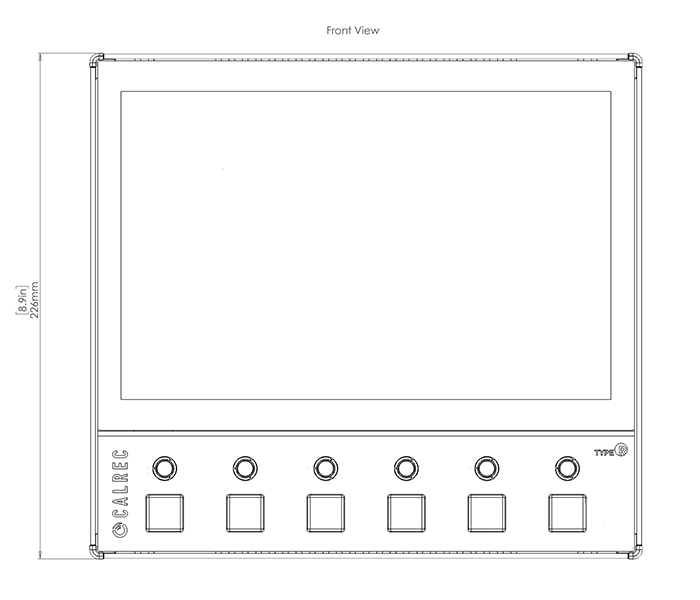
SSP
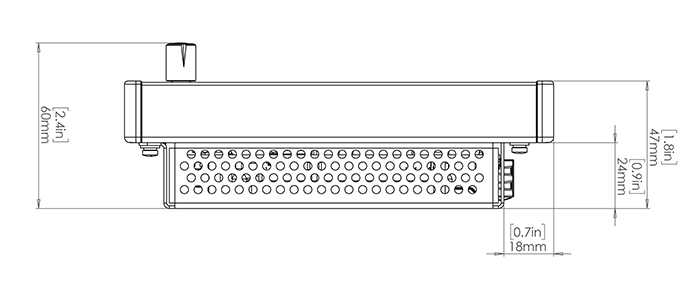

-
-
Take a look at our certified Type R training series designed to get an operator up and running in minutes.
Free Certified Training with Calrec Sound Institute
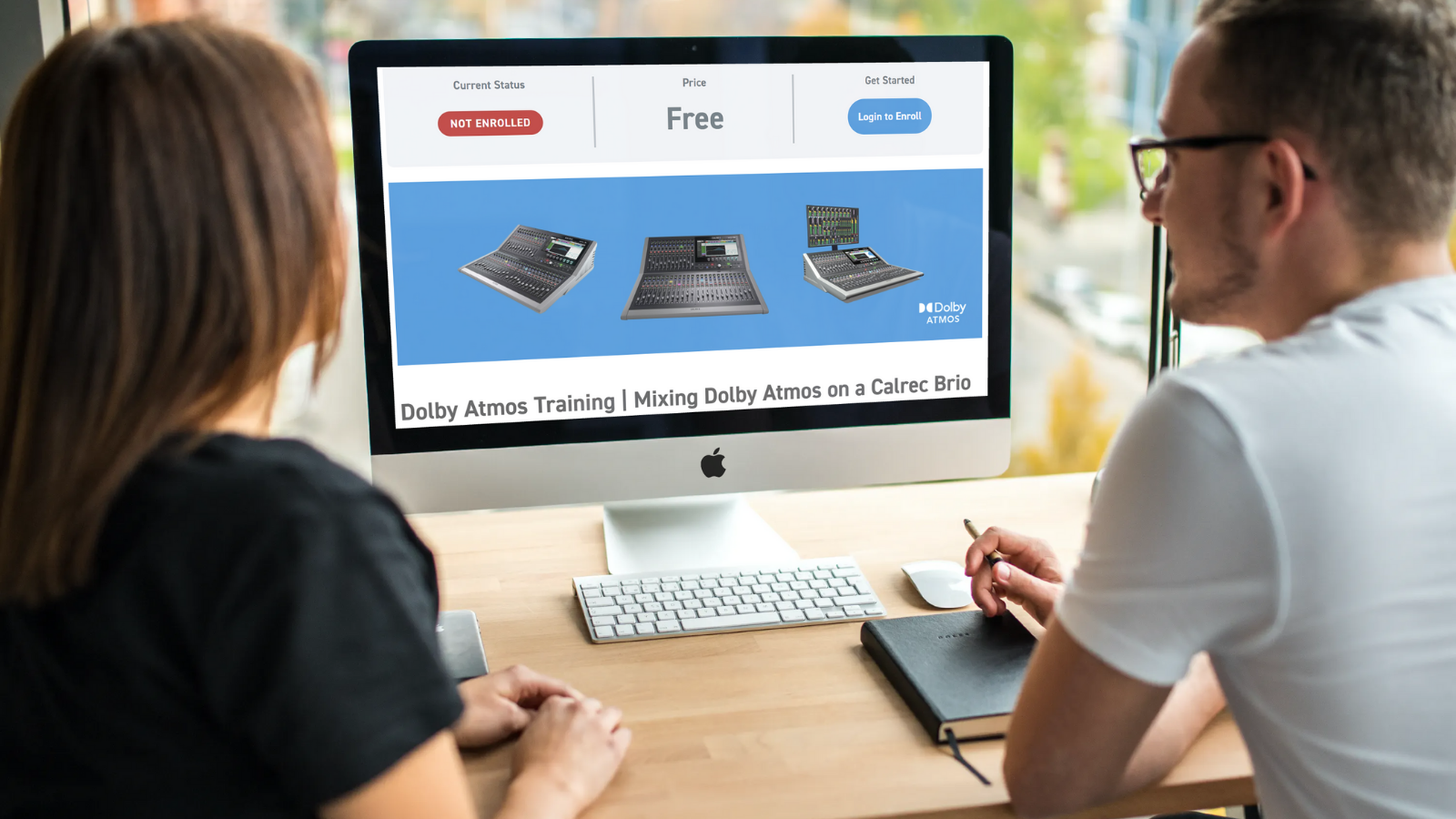
Calrec Type R Training: Designed to get you up and running quickly and with confidence.
Sign Up HereHow can we help?
Latest Type R Installations, Customer Stories & News
Tradeshows & events
NAB 2024 Preview | Why attend NAB 24?
NAB New York 2023 Preview
IBC 2023: 6 reasons to join Calrec at IBC
Join Calrec at MPTS 2023
NAB 2023 Preview
EMG UK chooses Calrec for ROC
Group One partners with AVL Group in Puerto Rico
We used a Type R plus a computer for configuration. Calrec Assist allowed me to take control remotely if anything went wrong during the show. Type R has native SMPTE 2110 connectivity; undeniably the future of networked audio transport in broadcast production.

Marine Martignac
Boîte à Outils Broadcast

